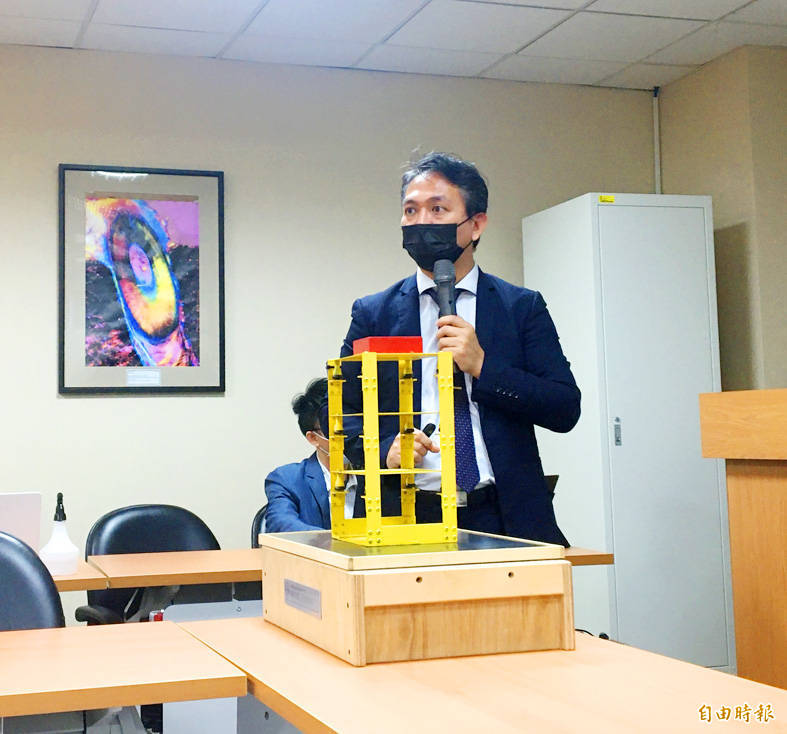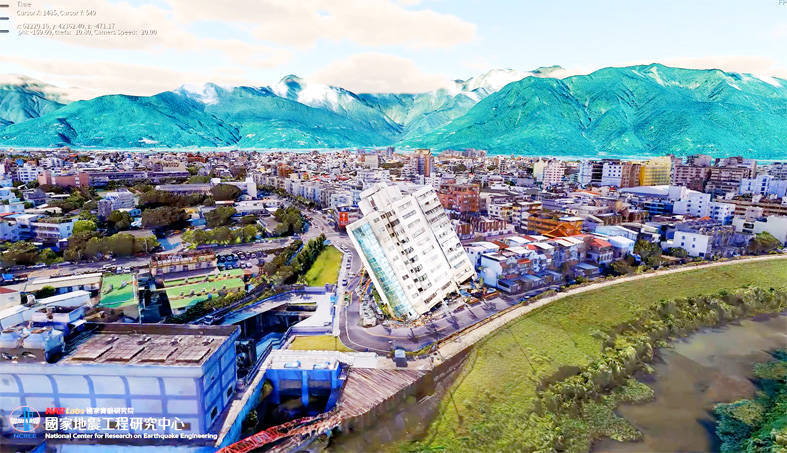《TAIPEI TIMES》 Center touts smart city quake system

National Center for Research on Earthquake Engineering research fellow Wang Ren-zuo at a news conference at the Ministry of Science and Technology in Taipei yesterday introduces an architectural model that was used to help build a “5D” smart city disaster prevention system. Photo: Lin Chia-nan, Taipei Times
‘FIVE DIMENSIONAL’: Features of the system are structural health monitoring, cost estimates for damage, water supply analysis and remote-sensing data from space
By Lin Chia-nan / Staff reporter
A “5D” smart city disaster prevention system that aims to help minimize damage to buildings from earthquakes yesterday was introduced by the National Center for Research on Earthquake Engineering.
The center's previous 4D system has integrated the Central Weather Bureau's data, while the 5D system shows estimates of damage that buildings might sustain during a quake, center research fellow Wang Ren-zuo (王仁佐) told a news conference in Taipei.
The levels of damage are divided into five tiers from “undamaged” to “collapse,” Wang said.
The system can forecast which buildings in a region are more likely to collapse, he said.
During a tremor, the system can swiftly gather seismic data and when the shaking is finished, it can indicate the best routes for rescue workers and evacuations, he said.
If authorities employ uncrewed aerial vehicles to inspect damaged regions, images they take can be incorporated into the system, which has image recognition algorithms, he said, adding that this would enable authorities to assess the scope of losses.
For example, if a building partially falls over — as the Yun Men Tsui Ti (雲門翠堤) building in Hualien City did following liquefaction amid a magnitude 6.2 earthquake in 2018 — the system can compute the best way to prop it up to help prevent further damage if there are aftershocks, Wang said.
If there is a power outage, the system can be supported by an emergency power system, center director-general Chou Chung-che (周中哲) said.
So far, the center has only finished building spatial models for Hualien City, Wang said, adding that it hopes to collect more architectural data from other local governments.
Other features of the system are integrated subsystems for structural health monitoring, estimates of the cost from damage, an assessment of damage to water supplies and analysis from remote-sensing data collected by the Formosat-5, which was launched in 2017, he said.
It is significant that the center has full control over the system’s infographics, given that it was developed entirely in Taiwan, he said.
The center hopes to initially deploy the system in the social housing units in Taoyuan and the Shalun Smart Green Energy Science City in Tainan, he said.
In addition, the center is partnering with the Ministry of the Interior’s Construction and Planning Agency to strengthen the structures of old buildings across Taiwan, as many are vulnerable to earthquakes, Chou said.
However, members of the public are normally not willing to share information about their homes online, he said.
Hopefully, people can work with the government to improve building safety, he added.
新聞來源:TAIPEI TIMES

An image taken from a video played at a National Center for Research on Earthquake Engineering news conference at the Ministry of Science and Technology in Taipei yesterday shows a “5D” smart city disaster prevention system simulating the collapse of Yun Men Tsui Ti building in Hualien City in 2018. Photo: Screen grab from a video provided by National Center for Research on Earthquake Engineering













